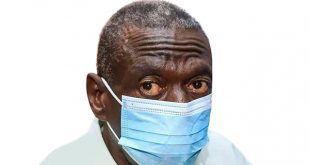
By Bob Roberts Katende
Patience we use one name to preserve her anonymity – faces a gloomy future. For the past one year, she has been suffering from incessant malaria, headache, and an irritating skin rash. She is HIV positive and has been advised to start taking anti-retroviral drugs.
Unfortunately, when she went to the clinic where she expected to get the drugs, she was told to wait. She is not alone. Many people living with HIV cannot be put on the national antiretroviral programme because it is already saturated and funds for new patients are not available.
Ministry of Health statistics show that about 1.3 million of Uganda’s 30 million people are infected with HIV. Of these, 360,000 are eligible for Anti-retroviral Treatment (ART). This is because their CD4 count is below 350 cells/mm that World Health organization sets as a threshold. But only about 180,000 (50%), have access to ARVs. This means, according to Dr Watiti Stephen, an AIDS activist, that many people who are in urgent need of drugs do not get them.

Uganda’s ART programme is 95% donor-funded. The Presidents Emergency Plan for AIDS Relief (PEPFAR) and the Global Fund to Fight AIDS, Tuberculosis and Malaria PEPFAR donates over US $284 million a year. This support goes to care and treatment. According to information from the Ministry of Health, after a long delay, the PEPFAR has levelled its funding for HIV programmes. This means that many organisations will not be in position to enroll new patients on the programme while others have been allegedly closed down.
Mildmay Centre on Entebbe road has a capacity of over 20,000 both children and adults. Of these, 10000 are on ART. This costs the centre roughly Shs70,000 per patient to cater for treatment and other costs for every visit to the clinic. To continue in operation within the means despite the overwhelming numbers, says Mbabazi Rosemary, its Advocacy and Public Relations Officer, Mildmay decided to reduce on other expenses such that money meant for treatment is not tampered with.
Though funds to the clinic remain stable and the figure is not mentioned, Mbabazi says that all their satellite clinics countrywide continue to enroll patients on the programme. However, it remains unclear how the centre will cope with the ever increasing number of cases.
The Makerere University-John Hopkins University Collaboration (MUJHU), which is one of the centres in the country carrying out research on Mother to Child Transmission (MTCT), is also facing financial constraints. The centre will by November this year finish offloading over 600 participants from the programme. Columbia University, which has been funding the programme for the last five years, will not renew its support to the centre. The participants will then be absorbed onto the national programme which is already limping.
It was reported last week that about 17 people in northern Uganda had died as a result of lack of antiretroviral drugs. The Ministry of Health has since launched an investigation into the deaths to find out whether the deaths could have been a result of other diseases like malaria. A healthy practitioner ,who preferred anonymity, says the government prefers to keep the situation under secret to avoid causing panic among the public.
In February, this year the Ministry of Health issued a press statement on the cut-off point of CD4 cell count for initiation of new AIDS patients on anti-retroviral treatment. It was put at 250 mm. The statement further read that 250 mm will be for adults and between 250 and 350mm for infected pregnant women in case they suffer from tuberculosis. The statement further urged all health workers at anti-retroviral centres to implement the new policy and treatment guidelines. The World Health Organisation standard is 350mm but Dr Zainab Akol, director of the AIDS Control Programme (ACP), says that means we will have to put many people on ART, yet the funds are not available. She adds that, even then many people with such a count (350mm) are healthy and refuse to take the drugs because they feel fine.
As donor funding remain stable, it would automatically be thought logical that government doubles its funds for the life saving drugs. That has not happened yet.
The national budget for 2008/09 allocated Shs60 billion for both malaria drugs and antiretroviral drugs. In the financial year 2009/10, the same amount of money has been allocated despite an additional 100,000 people who need to be put on treatment, besides the already estimated 180,000 people receiving the drugs.
Despite this, Minister of Information and National Guidance, Kabakumba Masiko while speaking to journalists at the Media Centre said there is no crisis. But, the Chairperson of the Parliament Standing Committee on HIV/AIDS and other related matters, Rwakimari Beatrice says there is urgency and government needs to double its funds to cater for the increasing number of people who continue to jump on the treatment line. She adds that government needs over Shs 96 billion to support patients. Going by that amount, there is a deficit of over Shs36 billion.
The estimated average lifetime cost of using both first and second line of ART is about Shs28,000,000 (about $140,000) per person. The Global Fund has signed a cheque of US$4.25 million that will enable government buy drugs for the next months. Speaking at a press conference at the Media Centre, the Global Fund Director of Country Programmes, William Paton, said its logical to start with this small amount to avoid drug shortages.
Faced with such challenges, sector experts like Dr Watiti say that government needs to ensure life time ART by instituting an HIV/AIDS tax.
 The Independent Uganda: You get the Truth we Pay the Price
The Independent Uganda: You get the Truth we Pay the Price


